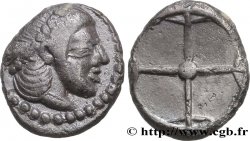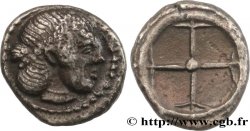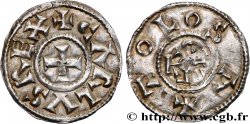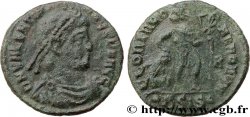v57_0029 - SICILY - SYRACUSE Tétradrachme
MONNAIES 57 (2013)
Starting price : 450.00 €
Estimate : 750.00 €
unsold lot
Starting price : 450.00 €
Estimate : 750.00 €
unsold lot
Type : Tétradrachme
Date: c. 480-475 AC.
Mint name / Town : Syracuse, Sicile
Metal : silver
Diameter : 25 mm
Orientation dies : 4 h.
Weight : 17,00 g.
Rarity : R1
Emission: groupe 3, série 8-11
Coments on the condition:
Exemplaire sur un flan ovale, bien centré des deux côtés avec le grènetis visible au droit à l’usure importante, mais parfaitement visible et identifiable. Droit et revers de très joli style archaïsant dans la droite ligne de la statuaire et de la céramologie grecques. Patine gris foncé de collection ancienne avec des reflets dorés
Catalogue references :
Obverse
Obverse legend : ANÉPIGRAPHE.
Obverse description : Bige au pas à droite, conduit par un aurige tenant les rênes et le kentron ; le bige est couronné par Niké volant à droite.
Reverse
Reverse legend : N RÉTROGRADE ET LÉGENDE MOLLE.
Reverse description : Tête d'Aréthuse à droite, les cheveux relevés et retenus par un diadème de perles, entourée de quatre dauphins.
Reverse legend : SUR-AK-OS-I-O-N
Commentary
Style très caractéristique tant de l’émission que de la statuaire féminine de l’époque. Même coin de revers que l’exemplaire du trésor de Randazzo (n° 354) et mêmes coins que celui de la collection de l’American Numismatic Society (ANS n° 59, pl. 3). Le coin de droit (A/ 83) n’a pas été réutilisé et est recensé pour trois exemplaires au total (Berlin, Paris et New York). Le coin de revers (R/ 127) est lié au numéro 185 (pour un total de 4 exemplaires).
Very characteristic style of both the issue and the female statuary of the period. Same reverse die as the Randazzo Treasure example (No. 354) and same dies as the one in the American Numismatic Society collection (ANS No. 59, pl. 3). The obverse die (A/ 83) was not reused and is recorded for three examples in total (Berlin, Paris and New York). The reverse die (R/ 127) is linked to number 185 (for a total of 4 examples)
Very characteristic style of both the issue and the female statuary of the period. Same reverse die as the Randazzo Treasure example (No. 354) and same dies as the one in the American Numismatic Society collection (ANS No. 59, pl. 3). The obverse die (A/ 83) was not reused and is recorded for three examples in total (Berlin, Paris and New York). The reverse die (R/ 127) is linked to number 185 (for a total of 4 examples)







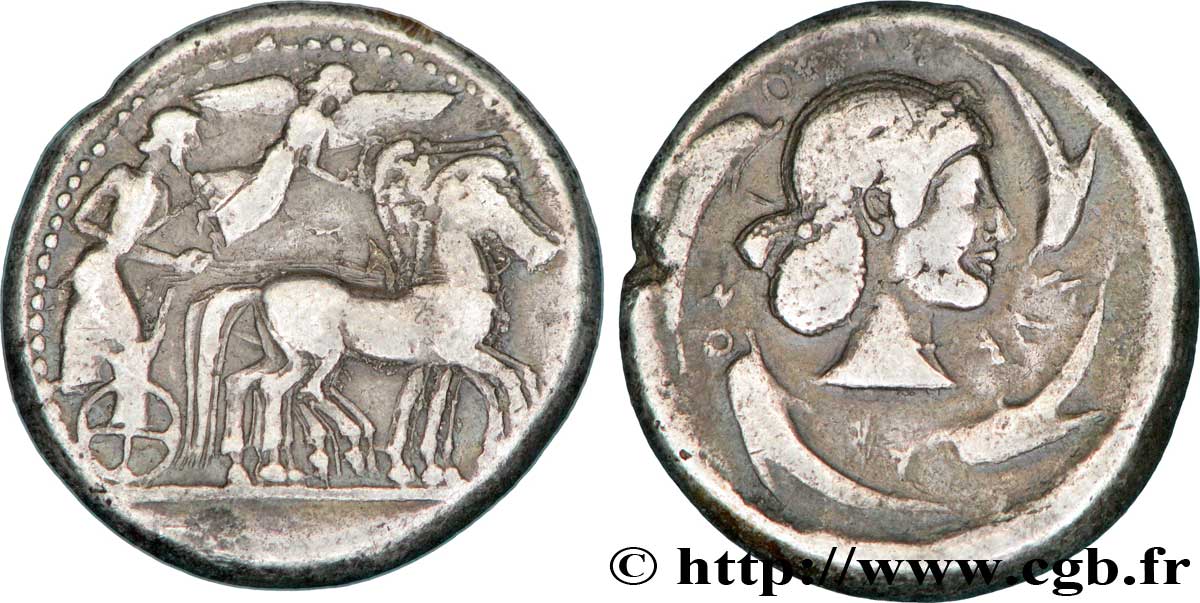
 Report a mistake
Report a mistake Print the page
Print the page Share my selection
Share my selection Ask a question
Ask a question Consign / sell
Consign / sell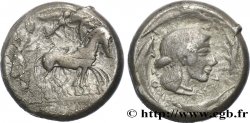
 Full data
Full data